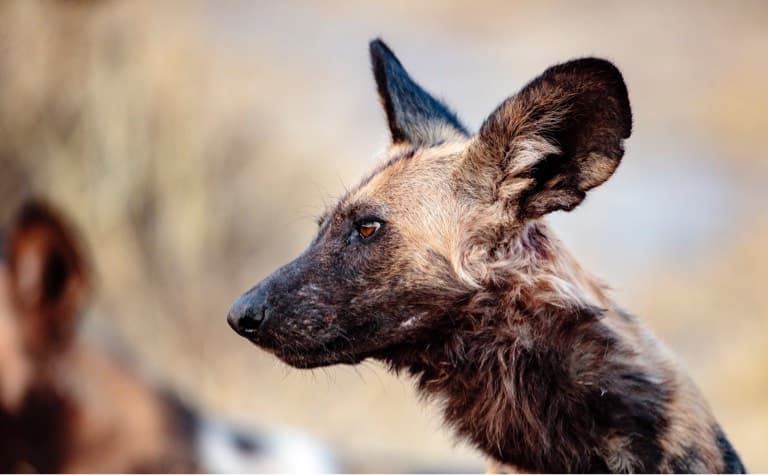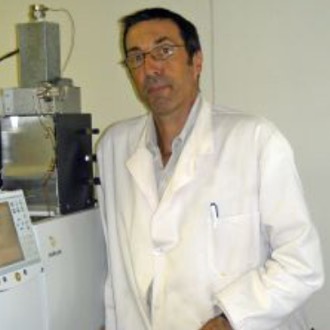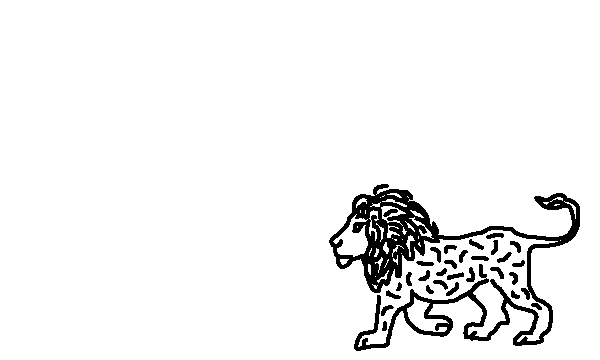BIO BOUNDARY PROJECT
Developing artificial chemical signals that will keep African Wild Dogs safely inside the borders of protected conservation areas depends on a strong partnership between field work and analytical chemistry. What samples the lab needs to analyze depends on the results of field work on the biology of African wild dog scent marking, and the formulas for the artificial scent marks that are tested on wild dogs in the field depends on the results of chemical analyses in the lab. Both the field work and the chemical analyses use cutting edge methods, research strategies and data analysis.
The field program follows the lives of eight wild dog packs in the BPCT study area in the eastern part of Moremi Game Reserve and the neighboring wildlife management areas. The analytical work is carried out in the Paul G Allen Family Foundation Laboratory for Wildlife Chemistry (PGAFFLWC) in Maun, the only laboratory in Africa dedicated to chemical signaling.
PAUL G. ALLEN FAMILY FOUNDATION LABORATORY FOR WILDLIFE CHEMISTRY (PGAFFLWC)
The mission of the PGAFFLWC is to identify the active signaling chemicals in natural wild dog scent marks, and then use those chemicals to formulate the artificial scent marks that will deter wild dogs from leaving protected areas. This is a challenge that pushes analytical chemistry to its limits. The scent marks that the dogs use to organize their use of space give off mixtures of more than thousand organic chemicals, at concentrations that reach down to below the parts per billion range, and in quantities of less than a billionth of a gram. Some of the compounds are new to science. To analyze these complex mixtures the laboratory has developed specialized methods to collect and process samples, and the performance of the gas chromatographs and mass spectrometer, that are the heart of the analytical capability, have been enhanced by in-house modifications. In addition to the capabilities of the laboratory in Maun, the PGAFFLWC has international collaborators with more specialized instruments and specialist expertise in natural products chemistry.
The laboratory is run by Dr Peter Apps who has a doctorate in Zoology and more than 30 years experience in analytical chemistry.
The Maun lab has already definitively identified over a hundred compounds in the odors of wild dog urine, feces and preputial gland secretion. One of the compounds is a new natural product, and several of them have never previously been found in animals, mammals or carnivores. The lab’s superior analytical methods have shown that many of these new compounds are actually widespread in other mammals besides wild dogs. Because the wild dog scents all contain several hundred different compounds it is not practical to reconstruct the scent signals by identifying everything in them and mixing all the compounds together. We have to focus on the components that are actually sending the important signals; working out which components to focus on depends on comparing scents that the dogs do not respond to with scents that they do respond to, based on results from field work. The PGAFFLWC has compared the chemical profiles of dozens of urine and feces samples from free ranging wild dogs, searching for patterns of differences in chemical composition that will point to which of the hundreds of compounds in the urine and feces are sending the signals that keep dogs in their home ranges. Comparisons between urine and feces, and urine from different dogs have raised a host of new and intriguing questions. The urine is surprisingly variable; there are striking differences between urine deposited at different places, at different times, by different packs, and by different dogs within a pack. In marks from individual dogs, major components appear and disappear over periods of one or two days, and there are thousand fold differences in the concentration of odor chemicals in marks produced by the same dogs at different times. Even humans can smell the difference between the different scent marks. The puzzle is that no biological features have been found that correlate with these differences, so whether they are signal or noise is a question still to be answered. When the dogs scent mark, they mix urine with secretions from glands along the urinary tract, and there is an intriguing possibility that the secretions are added according to where the dogs are in their home ranges. Mapping chemical composition onto the locations where the samples were collected will show whether chemistry and ranging behavior are related. Dogs more frequently investigate scent marks from strangers than from neighbors, and the signal may depend on the differences between packs’ scent marks rather than on a universal signal of occupation. Wild dogs’ scent signals must be species-specific to wild dogs, and so the laboratory has also analysed urine, feces and anal-gland secretions from lions, leopards, spotted hyaenas, black-backed jackals, cheetahs and four species of herbivores. Chemical features that the wild dogs share with these other species are probably not wild dog signals. For most of the other species the analyses by the PGAFFLWC provide the only data from wild, free ranging individuals. With samples as complex as wild dog scents there are always new compounds to investigate and new analytical challenges to face. The current focus is on defining the chemical structures of two components of wild dog urine that are optically active, because in other species optical activity is critical to signaling function.


RESEARCH PARTNER, BIOBOUNDARY PROJECT
PETER APPS, PHD
Dr Peter Apps’ joined the BioBoundary project in April 2008 to set up and run the wildlife semiochemistry laboratory.

Dive straight into the feedback!Login below and you can start commenting using your own user instantly